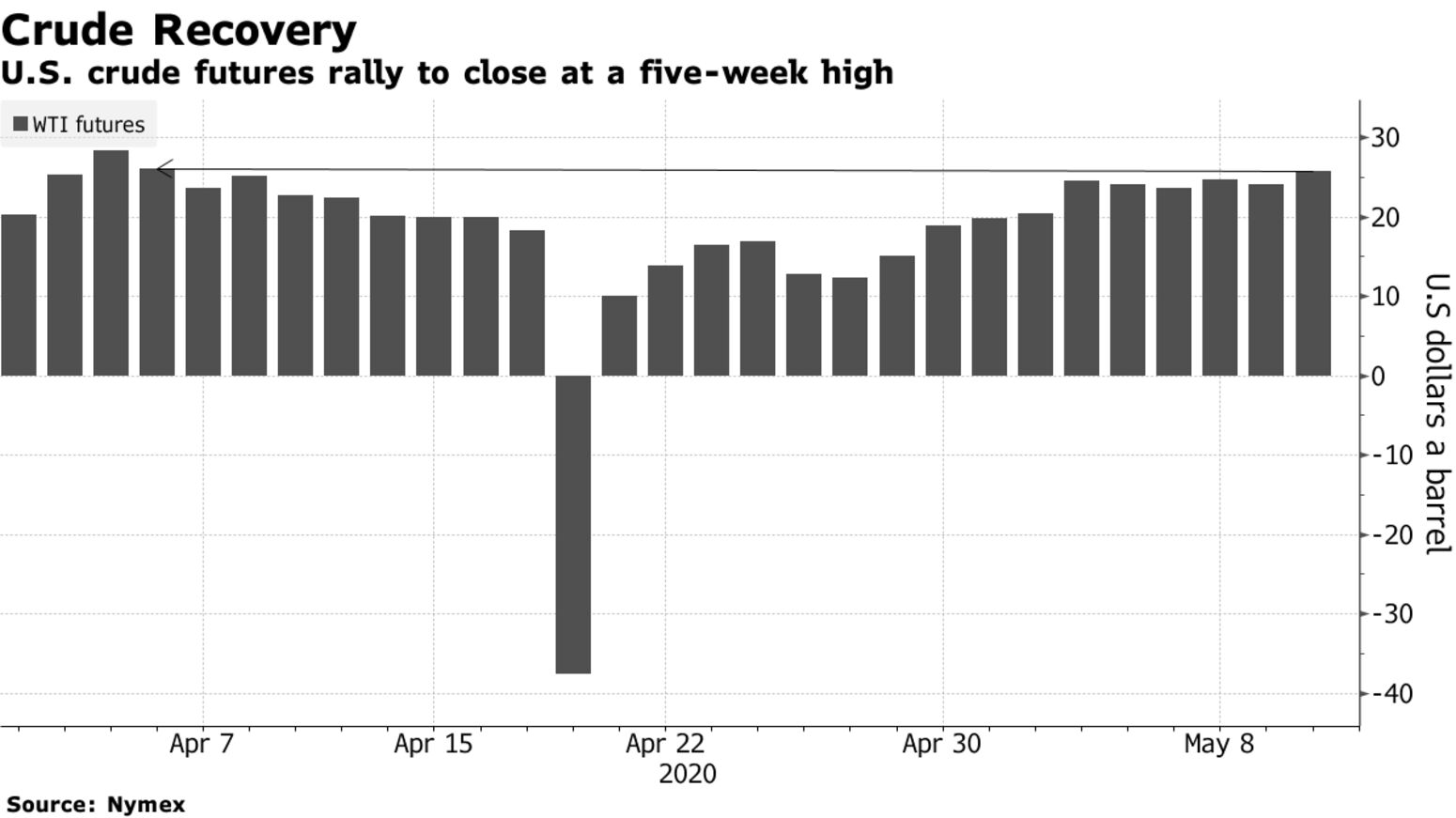Oil climbed to the highest level since early April after the U.S. government lowered its output forecast for the year. Futures in New York gained 6.8% on Tuesday. The Energy Information Administration revised down its 2020 and 2021 crude output forecasts in its monthly Short-Term Energy Outlook. An American Petroleum Institute report showed that supplies in Cushing, Oklahoma, fell by 2.26 million barrels, according to people familiar. If the EIA confirms the data on Wednesday, it will be the first draw at the delivery point for U.S. crude futures since the week ending February 28. Saudi Arabia plans to cut production by an additional 1 million barrels a day, easing concerns over storage capacity hitting limits worldwide.

Saudi Arabia’s move to reduce output by more than required under the OPEC+ deal was followed by pledges from the United Arab Emirates and Kuwait. The decision prompted U.S. President Donald Trump to tweet that the production cuts are raising oil prices and that “Our great Energy Companies, with millions of JOBS, are starting to look very good again.” Still, oil is down about 58% this year with little clarity about when, and if, global consumption will fully return. Consultancy IHS Markit doesn’t see oil recovering to pre-virus levels until the second half of 2021. The U.S. also lowered its global petroleum demand forecast to 92.6 million barrels a day from 95.5 million a month ago. That compares with a supply outlook of over 95 million barrels a day. The API also reported a 7.58 million barrel build in total U.S. crude stockpiles and a 1.91 million decline in gasoline supplies.
“The road to an oil price recovery will likely be choppy and plagued with stop-and-go rallies and selling cycles until some level of price certainty is restored,” said Roger Diwan, vice president of financial services at IHS Markit.
